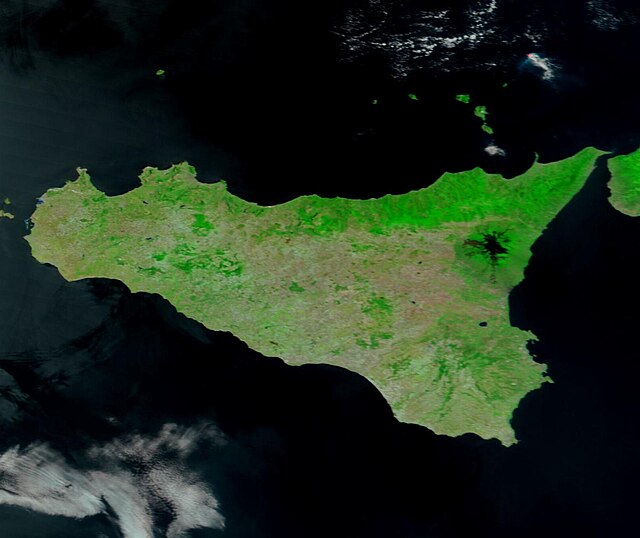Sicily, home to livestock, olives and such Sicilian diets as wild fennel, has been battling drought effects for months. Though this has prompted Italy to declare a regional emergency, the region is still an agricultural center.
First of all there are the region’s cattle riches which constitute 6% of Italy’s total cattle production in a good year.
A case in point was 1999 when there were 16,000 cattle farms across the Mediterranean island because then there was plenty of pastures.
Goats and sheep, too, are a major industry in Sicily, whose capacity represents 15% of national production across 10,000 farms, as of 1999.
Another major sector that is seeing the devastating effect of the drought is the dairy sector, which is currently facing water shortage. The drought had by early August 2024 decreased annual rainfall to 414 mm versus the historical yearly average of 750 mm.
But the region’s milk sector has been performing well in recent years, such as in 2019, when total milk deliveries hit 199.182 kiloliters (tonnes).
Dairy production is also a mainstay of Ragusa, the mountainous province in the south-east, which produced 78.9% of Sicily’s total milk in 2019.
Fodder and Other Crops
Hand-in-hand with livestock wealth is fodder and wheat, which could reduce by between 60 and 70% in 2024 from drought effects.
In the past, however, hay and pasture production has performed better than these details show. According to a 2009 study, forage crops in three representative farms in Sicily ranged from 7.6% to 48.2% of each farm’s total cropland. Additionally, cereals that could double as pastures covered at least 4.1% of the farm area.
Outside the livestock sector is the lucrative olive oil sector, which again has fallen prey to climate change in the whole of Italy.
Though Italy ranked second in 2022 for global olive oil exports at €62 million, the country cut down 30 million aging olive trees.
Almost all parts of Sicily produce olive oil, especially Valli Trapenesi, a western region with its own protected area. Arguably, Sicily represents between 6% and 10% of Italy’s olive oil production.
Ultimately, focus in 2024 has shifted to drought mitigation measures rather than production. Italy’s government in June 2024 provided an initial €20 million emergency fund, even though the drought impact has cost farmers over €1 billion. Money matters aside, below are statistics on Sicily agriculture that put the 2024 drought into the picture.
Sicily Agriculture Statistics
Sicily is an autonomous and largest island among the Mediterranean regions of Italy. In 2022, it had 8% of the total population in Italy, the fifth highest among 21 regions. Agriculture is a mainstay here, seen in the large numbers of farms as a national proportion. According to the Government of Italy’s data, there were 142,416 farms in Sicily in 2020, the second highest nationally after Apulia’s 191,430.
How has drought affected the number of farms in Sicily?
Despite coming second in farm numbers nationally, Sicily saw a farm count decrease of 35.2% between 2010 and 2020. In comparison Apulia in the south-east lost -29.6% while Campania (whose capital is Naples) saw the largest loss at -42%.
What is the status of livestock production?
Sicily is not the biggest region in terms of livestock as it came seventh in the 2019-20 census, with 15,086 livestock farms. The national leader was Sardinia, a western Italy Mediterranean island, with 24,450 farms in the 2019-20 period. In production, Sicily produced 343,614 head of cattle and buffalo and 917,211 head of sheep and goats. There were also 60,373 pigs and 4,102,355 poultry here in the 2019-20 period.
Climate data
Given its position in the Mediterranean, Sicily experiences rainfall and drought spells sceasonly. In 2021, only 28% of the whole island experienced intense rainfall, which that year was less than 1,000 mm for the entire island. However this intense rainfall portion was higher than that of other Italian regions except Campania whose intense rain area was 32%. But among the 21 regions, Sicily had the third lowest yearly rainfall, only ahead of Apulia and Sardinia each with less than 1000 mm.
